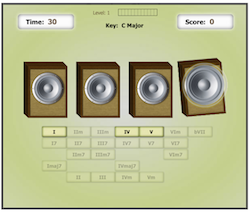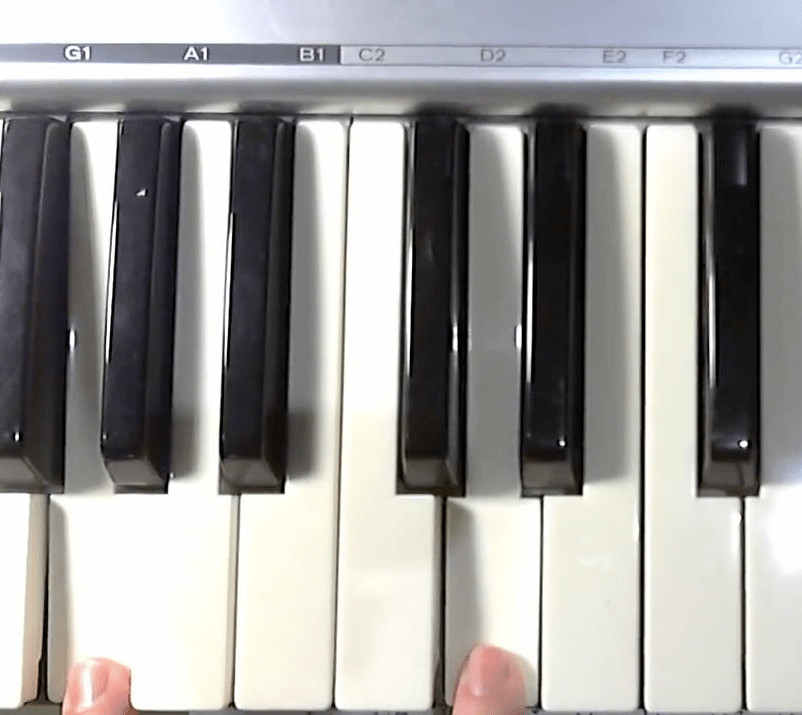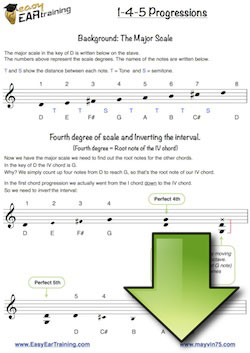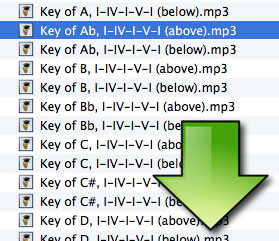Want to play songs by ear? This video series shows you how, step-by-step.
In the last episode Brad Mavin explained the Cycle of Keys (a.k.a. Circle of Fifths, Cycle of Fifths) and now he’ll extend that concept to “1-4-5” chord progressions, the bedrock of all those 3-chord songs.
We’ve also got some special extras which Brad has prepared to accompany this episode. Read on to learn more and download your free ear training resources!
Episode 4
In this episode you’ll find out:
- How to use the cycle of keys in a musical context
- How to hear I-IV and I-V transitions
- The importance of the perfect fourth and perfect fifth intervals and how they relate to these chords
- How to apply all this and start working songs out by ear
Four, Five, IV, V, Fourth, Fifth, P4, P5…
Don’t let the terminology confuse you! There are a lot of “fours” and “fives” in this episode.
Brad’s talking about:
- Intervals: leaps of a perfect fourth or perfect fifth
- Chords: the four chord and five chord which work with the one chord to harmonise a song
So far, so good…
Where it can get confusing is: A perfect fourth plus a perfect fifth makes an octave.
This means that if you start from the tonic note (or the “one chord”), you can go UP a perfect fourth, or DOWN a perfect fifth – and reach the same scale degree: the “four chord” note.
Likewise, you could go UP a perfect fifth or DOWN a perfect fourth, and you get to the “five chord” note.
This is one of those things which is confusing when you talk about the theory in the abstract – but as soon as you start looking at real musical examples, and playing around with it on your instrument it will all start to make sense!
Here’s the example from the video of moving in perfect fourths (P4) and perfect fifths (P5) in the key of D, to reach the four chord (IV) and five chord (V):
| The D (I) chord can | go UP a Perfect 4th to the G (IV) chord |
| or DOWN a Perfect 5th to the G (IV) chord |
| The D (I) chord can | go UP a Perfect 5th to the A (V) chord |
| or DOWN a Perfect 4th to the A (V) chord |
Reference sheet
You can also think about this in terms of interval inversions. If you want to know more about this, you can download an accompanying guide for this lesson:
Practice tracks
To help you tune your ear into these chord transitions, Brad has also prepared a special pack of MP3s:
Download them, transfer them to your phone or MP3 player, and listen.
Put it on shuffle and check that you can tell the upwards from the downwards transitions.
Try playing them back on your instrument by ear.
(You might want to pick just a few keys you’re comfortable with!)
3-chord songs and I-IV-V progressions are the basis of modern music. Learn to play these common chord progressions by ear on your instrument using these techniques and resources from Brad. And next time: minor chords!
Practice hearing I-IV-V progressions
 |
Speaker ChordsIf you want to learn to hear 3-chord progressions like I-IV-I-V, try the fun “Speaker Chords” game from Theta Music Trainer. You’ll learn to recognise these chord roles (and more!) with real music clips. Try it for free right now! |










